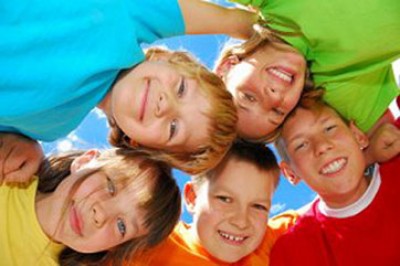Altitude Training Systems
ATS are global leaders in altitude training and research. From mask systems and inflatable tents to simulated altitude facilities, we help all athletes gain the competitive edge. Our…
read more
The Active After-School Communities (AASC) program has been criticised by obesity experts.
Critics of the program, run by the Australian Sports Commission and funded at a cost of more than $200 million, have suggested that the children who take part are doing barely more exercise overall than non-participants.
The program was set up by the Howard Government at a cost of $90 million over four years, and was expanded by the Rudd government, which allocated it a further $120 million in the 2007 budget. A Federal Parliamentary inquiry in May backed the scheme and recommended it be expanded.
However, University of Melbourne obesity expert Professor Joe Proietto said it appeared children involved in the AASC were compensating for their increased activity by being more sedentary than other children for the other parts of the day. Professor Proietto also indicated that there was also minimal difference in the children's body mass indexes.
By contrast, Professor Proietto highlighted that patients had to wait two years to see him in one of the few public hospital obesity clinics, and a further two years to see a surgeon if he decided obesity surgery was their best option. Professor Proietto continued that even after patients made it to the surgeon's rooms, they faced a further three years' wait until they could have their operation in the public system.
"There's now evidence that the Active After-School Communities Program . . . has done absolutely nothing to stop obesity in children," Professor Proietto told a recent seminar organised by the Australasian Society of Clinical and Experimental Pharmacologists and Toxicologists.
"We must always check out what we do in terms of prevention. Getting kids to do school exercise doesn't work. If we are going to keep on ignoring the science we will be going down dead-ends continuously."
Recent research by Deakin University academics published in the journal Obesity (The Cost-effectiveness of Australia's Active After-school Communities Program; Marjory L. Moodie, Robert C. Carter, Boyd A. Swinburn, Michelle M. Haby; Obesity; November 2009) found the program was not cost-effective and that fewer than 70,000 participants had previously not been doing enough exercise.
The article's abstract suggested that "although the program has intuitive appeal, it was not cost-effective under base-case modeling assumptions. To improve its cost-effectiveness credentials as an obesity prevention measure, a reduction in costs needs to be coupled with increases in the number of participating children and the amount of physical activity undertaken."
A spokeswoman for the Federal Health Department said the Australian Sports Commission did not agree that the AASC program was not cost-effective.
"The AASC program is not intended to exclusively reduce obesity or overweight in children," the spokesperson said, adding that the program "not only seeks to encourage traditionally inactive primary-school-aged children to participate in structured physical activity and sport, but also has a strong focus on local community involvement, and is intended to enhance community capacity to deliver high-quality, structured physical activity and sport programs for children."
One of the recommendations in the recently published Crawford Report into sport funding and governance was for the Active After Schools communities program to be contracted out to private sector operators in the future.
17th November 2009 - CRAWFORD: PARTICIPATION, NOT MEDALS, SHOULD BE AUSTRALIA’S SPORTING GOAL
5th June 2009 - REPORT CALLS FOR ‘MORE FACILITIES FOR PHYSICAL ACTIVITY’
Support our industry news service
We hope that you value the news that we publish so while you're here can we ask for your support?
As an independent publisher, we need reader support for our industry news gathering so ask that - if you don't already do so - you back us by subscribing to the printed Australasian Leisure Management magazine and/or our online news.
The Complete Guide to Leisure Industry Products & Services.
ATS are global leaders in altitude training and research. From mask systems and inflatable tents to simulated altitude facilities, we help all athletes gain the competitive edge. Our…
read moreABOUT SPORTENG specialises in the Planning, Design and Construction inspection of Fields of Play for all sports. Blending engineering with the specialist knowledge gained from working closely with…
read moreWith industry leading solutions in design and durability you can improve your facilities with our access control operations, payment systems and flexible personal locker storage solutions. Your…
read morePlayrope Aqua-Fun, are the Australian & New Zealand exclusive distributors for Vortex Aquatic Structures International, the world leader in aquatic playgrounds and urban water landscapes.…
read moreAs of February 2023, Ungerboeck Software has rebranded as Momentus Technologies.
read moreSwitch to smarter fitness management software with Clubworx based in Australia that enables fitness businesses to start or grow their business with ease. - all in one place from anywhere in the…
read moreGeoff Ninnes Fong & Partners (GNFP) is a structural, aquatic and civil engineering consultancy with broad experience in the design of new municipal and institutional swimming pools, hydrotherapy…
read moreTurnstile Entry Systems and Access Control Centaman Entrance Controls’ Award Winning Range of Access Control Systems includes tripod & triarm turnstiles, speedgates, full height…
read moreGet your business noticed in our targeted directory. Viewed by 10,000 industry professionals per week!